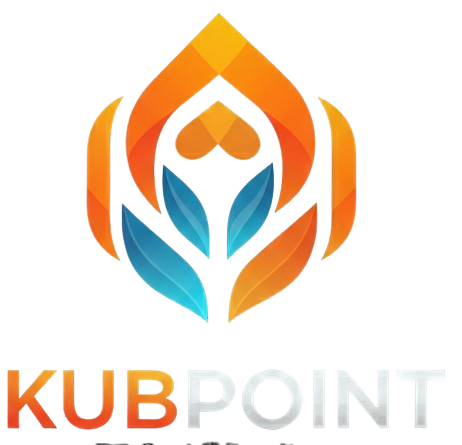AI is everywhere in cloud security right now. Nearly every product claims to be “AI-powered,” and copilots and chatbots promise to help teams interpret issues faster. But for most platform teams, understanding the problem isn’t the hard part.
The real challenge is resolution.
Cloud environments change quickly, and the backlog of security findings grows just as fast. Teams aren’t struggling with awareness; they’re buried in alerts, tickets, and rework. What they need isn’t more explanation. They need help fixing things.
That’s where most AI tools fall short. They summarize and suggest, but rarely act. What’s missing is AI that understands infrastructure, aligns with policy, and generates safe, usable fixes. AI that takes problems off the board, not just highlights them.
The AI Spectrum in Infrastructure Security
To understand where AI actually delivers value in cloud infrastructure, it helps to zoom out and look at the spectrum of approaches teams are adopting. Not all AI is built the same, and not every solution solves the same part of the problem.
On the one hand, we have automation tools built on scripts, rules, signatures, and policy-as-code frameworks. These systems enforce guardrails and prevent misconfigurations but rely heavily on manual setup and maintenance. When policies change or drift occurs, someone still needs to intervene.
Next are the copilots—AI-powered assistants built on large language models (LLMs) that aim to simplify complex issues. They can generate code from high-level descriptions (a process often called “vibe coding”) or explain misconfigurations and compliance gaps. While useful for prototyping and visibility, their output is frequently riddled with security flaws, inaccuracies, and hallucinations. Crucially, they stop short of providing production-ready fixes – leaving resolution up to the engineer.
A step further are agentic AI systems that attempt lightweight remediation. They might isolate a resource, assign a severity score, or update a tag. While they move slightly closer to action, they’re often limited by scope or lack the context needed to apply safe changes at scale.
Then there are fix engines, AI systems purpose-built to deliver actionable, standards-aligned fixes. Unlike assistants that simply highlight issues, these tools take decisive action. They understand your infrastructure, apply the right policies, and generate merge-ready pull requests that engineers can confidently review and deploy.
This is where AI moves from hype to help. The most valuable systems don’t create noise and don’t need constant supervision. They work quietly in the background, producing results teams can trust so the infrastructure stays secure and the delivery pipeline keeps moving.
Why Most AI Fails in Infrastructure Contexts
Many AI tools fall short when applied to infrastructure because they don’t understand their operating environment. Identifying problems is easy; fixing them safely, in context, is the real challenge.
Most AI can’t grasp architectural intent. It might suggest a valid change that breaks something downstream or disrupts teams’ deployment. Others ignore security frameworks like CIS or NIST, producing fixes that don’t meet compliance standards or audit needs.
Even worse, many rely on flawed inputs (large quantities of other people’s code), and produce probabilistic outputs, leading to hallucinated or unsafe code developers can’t trust. Instead of helping, these tools create extra work, forcing engineers to review, revise, or reject AI-generated suggestions.
Without determinism, traceability, and environmental awareness, AI doesn’t reduce the workload; it shifts it. And for platform teams, that’s not progress.
What the Right Kind of AI Looks Like for Cloud Teams
The right kind of AI doesn’t force teams to change how they work. It fits into existing pipelines and makes them better. It speeds up delivery without compromising trust or control.
It starts with being context-aware, understanding not just the syntax of IaC, but how resources connect and affect each other. Without that, fixes are risky.
It must be standards-aligned, enforcing policies like CIS or NIST (or a specific organization’s policy) directly in code. Not just flagging issues but fixing them in a way that holds up to audits.
Fixes also need to be merge-ready. Suggestions in a dashboard still leave work for engineers. Pull requests that are scoped, safe, and reviewable turn AI from insight into action.
And it must be transparent. Every change should be explainable and traceable, so teams know what changed, why, and how it maps to policy.
When AI meets these needs, it becomes a real partner amplifying what engineering teams already do well.
From Alerts to Fixes: Closing the Loop
Cloud security tools have become very good at one thing: telling you what’s wrong. They detect risks, misconfigurations, and policy violations with impressive precision. But for many teams, that’s where the help stops. The result is a flood of alerts, dashboards full of unresolved findings, and ticket queues that grow faster than they shrink.
The real bottleneck is resolution, not visibility. Fixing issues often requires manual effort, context-switching, and time that engineers don’t have. Reviews get delayed. Tasks get de-prioritized. And the gap between detection and remediation widens.
This is where AI should step in, not to generate another list of to-dos, but to close the loop. That means taking well-scoped, standards-aligned action inside the development workflow, where code is reviewed, tested, and deployed.
Infrastructure security, like quality, performance, and reliability, should be enforceable in code. It should be automated where possible, reviewable when needed, and safe by default. That’s how teams stay fast and secure without compromising either.
Security That Ships
Not all AI is created equal. The real value isn’t in the complexity of the model or how well it explains a problem. It’s whether it helps teams fix that problem quickly and safely. In infrastructure, where speed and stability matter, outcomes are everything.
The tools that last won’t be the ones that generate the most alerts or offer the most elegant explanations. They’ll be the ones that close the gap between detection and resolution. The ones that fit into how engineers already work, generate fixes teams can trust, and move security forward without slowing delivery down.
That kind of AI earns a place in the pipeline not because it sounds smart, but because it helps teams ship secure code faster.

